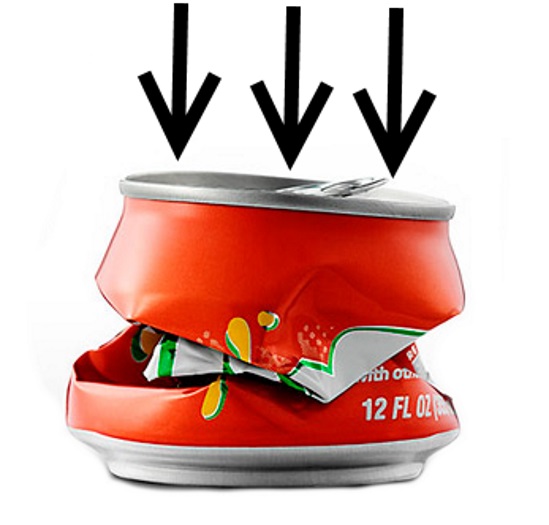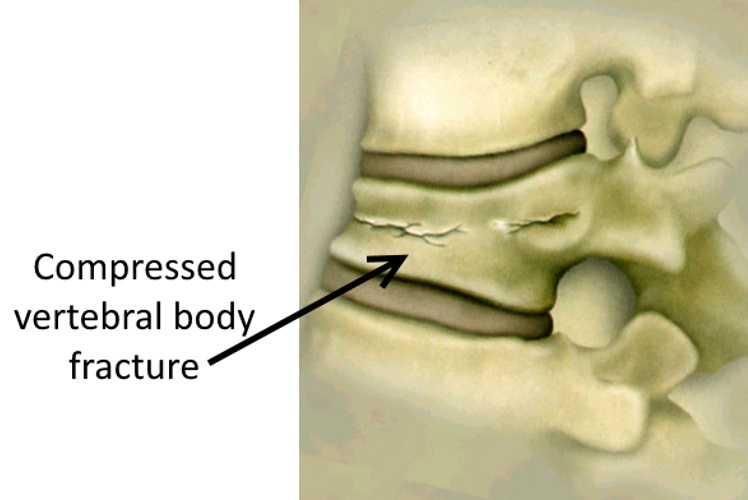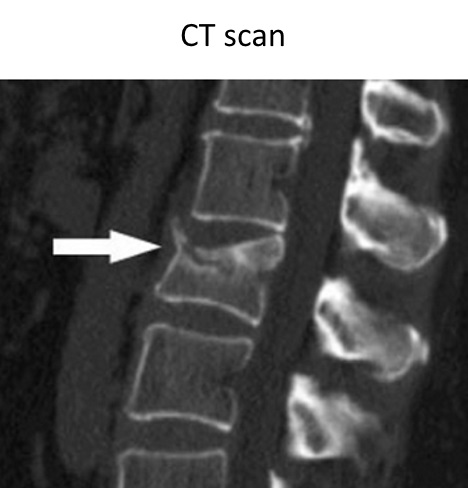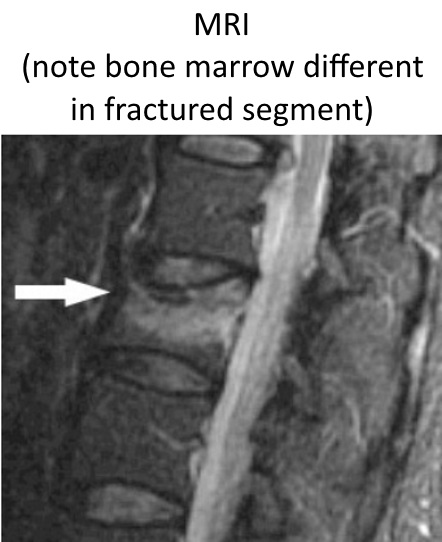Vertebral Compression Fractures
This condition, where the body of the vertebral bone is to a degree crushed like a soda can, is more likely in patients with thinning of the bones, a common cause of which is osteoporosis.


These fractures can occur from a fall, or when the bones are weak, the trauma can be more subtle like a sneeze. On occasion, there may also be no associated trauma.
This view, from a CT scan reconstruction, shows the compressed vertebra, which has a different shape than the bones above or below.


This MRI side view shows that the bone marrow indicated by the arrow has a whiter appearance indicating the bone fracture, with the signal change due to edema and swelling associated with the fracture process.
While these fractures can heal with non-operative treatment, patients often consider a procedure called kyphoplasty to feel better sooner.
